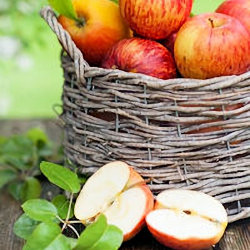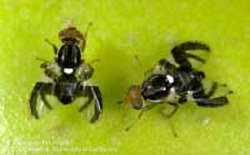Analysis Example
Let's have a little fun with a simple example of the analysis and evaluation process. There is a basket of apples on the counter.

You see one apple has a bump on it! You have now identified a possible problem.
Analysis: What does it look like?
To better understand why the apple looks like it does, you decide to cut it up, take a look at the seeds, the core, the flesh and the skin. You gather the following facts about the apple:
- The core and seeds look just fine.
- The bump is "smooshy."
- There are many little discolored "tunnels" throughout the fleshy part.
- Flesh surrounding the tunnels appears rotted.
- The apple tastes very good.
- The skin of the apple is discolored in places.
Evaluation: OK, how "good" is the apple?
Since you have gathered information, you are able to evaluate the quality of the apple based on facts. You determine the apple is flawed. Now that you know there is a real problem, you can figure out the cause to prevent the rest of the apples from spoiling. You must conduct a cause analysis. You understand that everything you've identified so far represents only the observable, measurable effects of some cause.
Cause Analysis: OK, what's the cause?
Now the question is, "what is really the cause?" There are two basic types of causes you identify in your analysis: surface and root causes (very appropriate in our apple example).
- Surface causes: It's obvious the damage is caused by a bug of some kind. Considering all the information gathered helps them search the internet and determine that an Apple Maggot has deposited eggs under the skin of the apple and fed on the flesh of the apple. They're quite happy about discovering the obvious surface cause, but why is the Apple Maggot causing a problem? It never has before! They've got to figure out the root cause.

- Root causes: You know the maggot did its damage, but why? Asking "why" a number of times, will help you eventually determine the less obvious underlying contributing causes of the spoiled apple. During root cause analysis you can determine that:
- the pesticide used on the apples was not effective against the Apple Maggot
- the Apple Maggot, which is native to the eastern part of the country, has somehow migrated to the local area
With this information in hand, you will be able to develop strategies to overcome this infestation.
Knowledge Check Choose the best answer for the question.
4-5. While conducting an analysis of a barrel of apples, you notice one apple has a large bruise on it. What does the bruise represent?
You forgot to answer the question!
